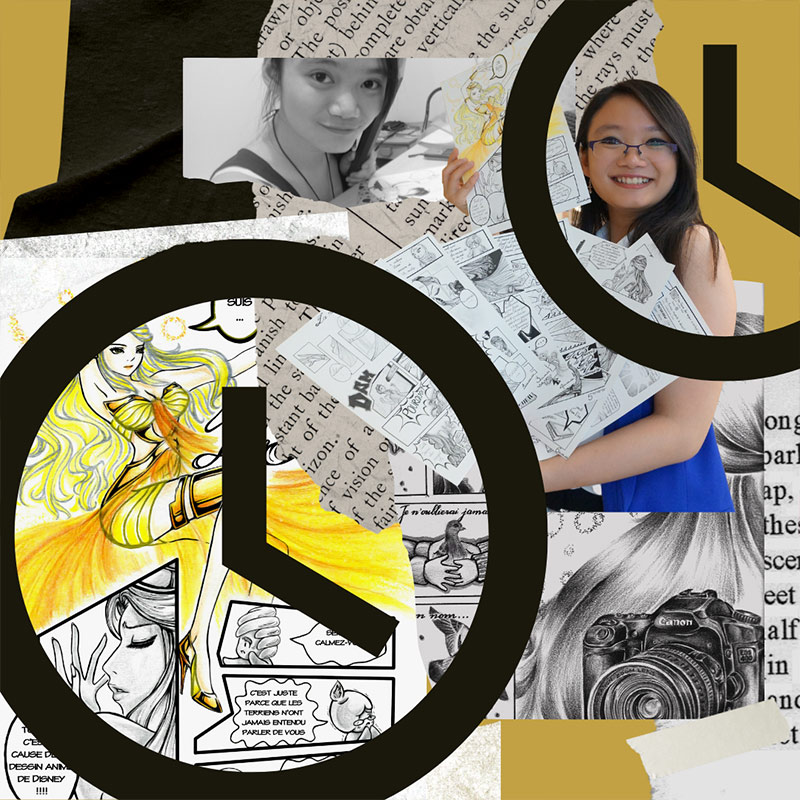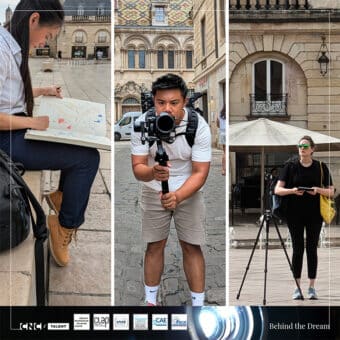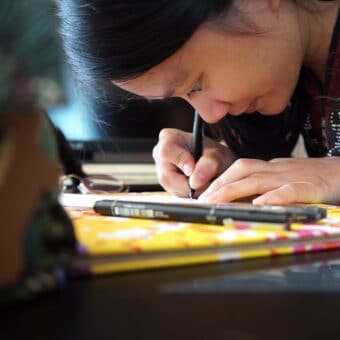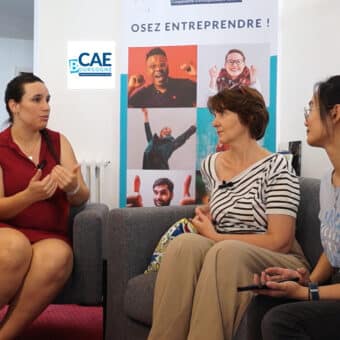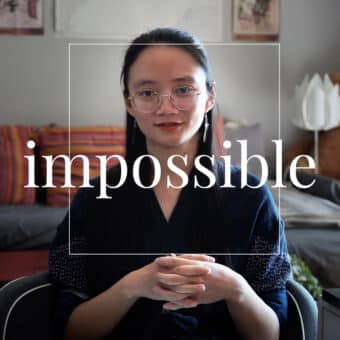Edited by my beloved friend K.L
Have you ever found yourself burning with the desire to draw some pieces, to write some stories, to create some videos, to compose some new tunes, but feeling like having no time to do just exactly what you know you would enjoy most?
Have you ever found yourself stuck with your responsibilities and the daily hum-drum while trying to hold on a job that has nothing to do with creation? Have you ever felt assured of having done what is right to do even if it makes you overwhelmed, but at the same time, you would feel like somehow you are burying your days and wasting your hours not doing following the calling voice inside you to create something? Have you ever found yourself watching people in creative professions rise to the top and regretting how much your creativity falls asleep in the brackets of your life…
If you find these words resonating with you, then this article is for you.
I know how you feel. Me too, I spent time being right where you are for over 15 years of my life.
I know that there is a saying “where there’s a will, there’s a way” but I also know that it only makes you feel guilty because there is no lack of motivation in you, only that your head is already under water.
In this article, I will share with you 5 effective and guilt-free ways to make more time for yourself to create. These methods helped me to keep the flame of creativity alive, to practice art more regularly, and in the end, they led me to become a profession illustrator as who I am today.
1. Make creativity an issue of life and death
I am not exaggerating!
The first step is to define a certain reason, a certain cause for your creation that is so big that you will magically find time to create, as if it is a matter of life and death.
When I was in my first year at the Institute of Technology, due to administrative problems, I was not allowed to have part-time jobs (FYI: I grew up in Vietnam and came to France to study at 17). So in order to pay for rent and food expenses, I participated in a comic contest and worked with all my mind to win the prize no matter what. It was a matter of survive for me. I needed that money to survive.
I won that prize and I also survived 35 hours of classes per week, combining with reports and assignments in a foreign language, all while moving regularly between Lorient, Vannes, and Rennes to carry out administrative procedures.
At the end of my fourth year of engineers school, I went through the same experiences. Back then, I was preparing for the exchange semester abroad. By that time, I was already working 4 part-time jobs alongside my internship and still not being able to cover all the expenses (university registration fees, annual application fees for the residence permit in France, plane ticket France-Canada, application fees for the visa…). Once again, the same comic contest I participated in my first year became my only chance to support myself. I went for it, won its prize, and made drawing once again my way to survive.
Because it was impossible to fit or add a job into my already full schedule of studie from 7am to 9pm, seven days a week, and I still desperately needed money, I had no other way than to win these contests, and therefore, I had to draw.
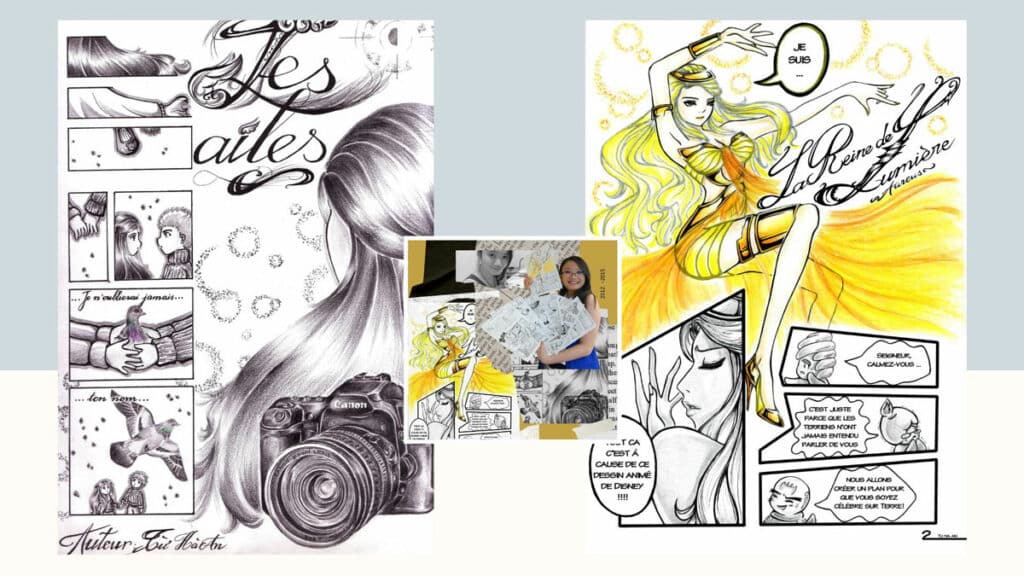
In both cases, drawing is not part of my field of study.
Thinking back, I still remember my exhausted body, the multiple nights that I barely had 3 hours to sleep, and all the half-meals swallowed in 10 minutes… But I cannot explain to you how I planned my days, or how I managed to keep going, except that: I had no choice. Drawing was a matter of life and death for me.
2. Reduce time for other activities
When we are short on time, we often focus on solutions to get more free time between two tasks. While what we really should pay attention to is how to reduce the time spent on non-creative tasks.
Perform non-creative activities in more efficient ways
Optimizing how you work or study is a good place to start. The goal is to spend less time on your daily responsibilities while keeping the same level of achievements, in other words, to increase your efficiency.
Here are some resources that helped me to optimize how I use my time:
- If you are fluent in French: Book Votre temps est infini (Your time is infinite) of Fabien Olicard (link Amazon)
- If you are fluent in English: Matt D’avella YouTube channel
- If you are fluent in Vietnamese: The Present Writer YouTube channel
Consolidate non-creative activities
Do you have tasks that you can group together to free up more time?
For example: Instead of taking 30 minutes a day to read the news, you can listen to it in audio form (through radio, podcasts or YouTube news channels). As such, it’s possible to listen to the news on your commute, or while preparing your meals. The 30 minutes you get back from changing the way of checking news can be used to write your blog articles or practice your harmonica.
Eliminate energy-consuming & time-consuming activities
This advice seems obvious and easy for some. But for people pleasers, saying no is a real nightmare. From my personal experience, it is in fact most difficult to refuse the social activities that you accept in the first place only to not displease others, like outings, having meal together, or joining afterwork drinks …
It is always tricky when these “others” are our family, long-time relationships, or colleagues with whom we have to work every day, or people that we sincerely care about.
Here are some resources that have helped me to say no, and more importantly, to deal with objections:
- Book: Essentialism of Greg McKeown (link Amazon, link Tiki)
- Book: Boundaries of Henry Cloud and John Towsend (link Amazon, link Tiki)
- If you are fluent in Vietnamese: Episode 59 of season 1 of The Present Writer podcast
3. Integrate creativity into your main activities
Whenever you see an opportunity to use your creative talents in your main activities, please go for it, and always try to offer more than what is asked or expected! This is an opportunity to openly create during your work time, at your workplace.
In my second year at the Institute of Technology, when I saw making a communication video in the list of possible projects, I totally went for it, full steam ahead. I took all of my courage to convince my teammates and our tutor to film a short film, which was in fact adapted from a Jack London short story.
That semester, I spent 2 days a week in the Institute’s classrooms writing the script, making storyboards and shooting the scenes, with the support of my professor, the Institute’s staffs and my classmates. Of course, without a budget and relying solely on the technical level of a beginner, that short film is far from being a masterpiece. However, this experience taught me all the basics of audio-visual.
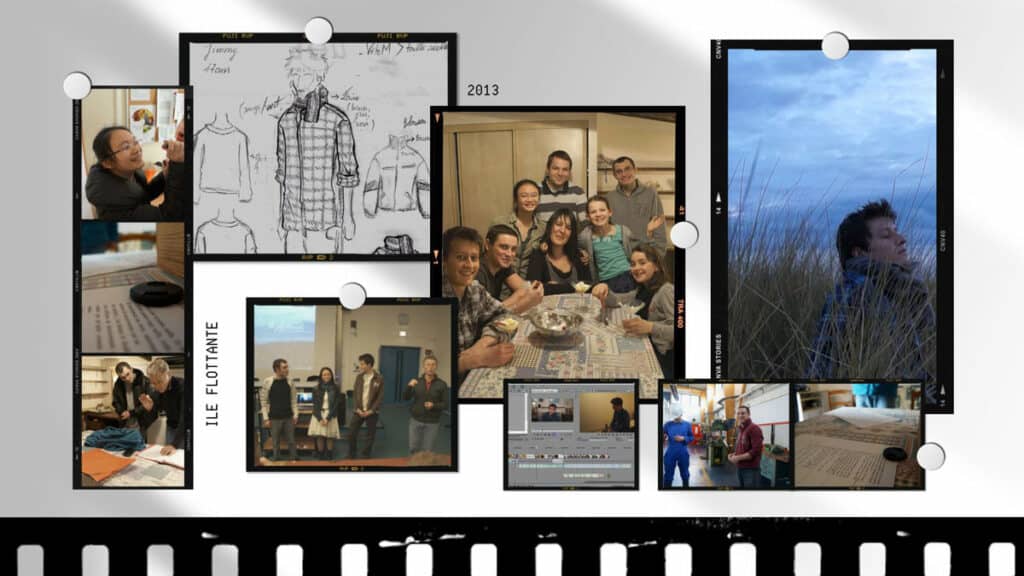
Some time later, in my first year as a safety manager, I tried to get my supervisor to let me prepare all the PowerPoint presentations of our department. Each time, I gave my best to make the most beautiful slides possible even if it was absolutely not the main point of the job. Shortly after, the same superior asked me to design several internal communication documents about safety. That’s how I got my own playground to practice my art making even in an environment that has the least thing to do with art.
Of course, my company at the time had no intention to pay for an Adobe Photoshop or Indesign license for a safety manager like me. However, this experience was a great opportunity to test my creativity despite the limited resources (making design with Powerpoint, Publisher, and Paint.net). And on top of that, I learned how to handle feedbacks (positive, negative, constructive) directly from my target audience for each communication campaign (aka. the employees).
4. Transform time for mandatory tasks into creative time
Time for mandatory tasks includes all the time you have to dedicate to tasks that you cannot avoid, such as time getting ready everyday, time for houseworks, time for commuting,…
If these tasks do not require keen concentration, then do not hesitate to practice a creative activity at the same time!
Let’s take transportation time as an example. I always choose the mode of transportation for the work-home commute based on the creative activity I want to do.
When I want to write the script for the videos, I always prefer taking the Tramway even if there might be bus lines that could take me home much faster with just one change. However, even if a direct commuting would take more time, not having to change helps me to preserve my flow. I also prefer transport with less vibration at time like that so I can write on paper with more ease.
There was also this time that I participated in mini-concerts, I walked the whole or part of the commute from work to home to practice singing and memorize the lyrics without having to disturb other passengers on public transportation.
Likewise, waiting time was often spent on observation sketches.
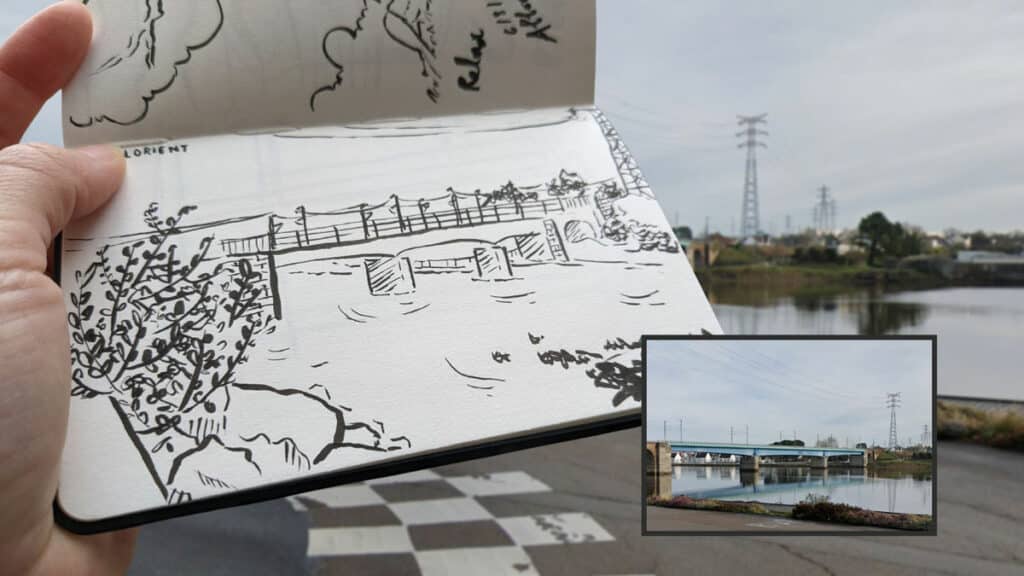
5. Create time by challenging yourself
You can set yourself a daily challenge within a limited time. For example: 5 minutes of drawing/writing/playing guitar every morning before going to school, or in the office before colleagues arrive.
It is noteworthy that the real aim of this method is only to keep the pace and practice just so you don’t have pressure yourself to create a complete piece every day, and therefore avoid disappointing yourself and burning yourself out unnecessarily.
However, I do not recommend this method if you have a long project to work on. Truth is if you only have 5 minutes to work on a project, you will be very likely to feel frustrated for the rest of the day. Moreover, the project will certainly progress too slowly for you to get any satisfaction in the process.
Keep your creativity on fire, even when you don’t have time for it
Few years before, I often joked that my relationship with creativity is like an extramarital affair. Figuratively speaking, I got married with the career of an engineer to reassure my parents while all I ever wanted to do is to earn enough money to sustain my lover (and the queen of my heart): creativity.
Indeed, « Have an Affair with your creativity! » is the advice given by Elizabeth Gilbert in her book Big magic (link Amazon, link Tiki):
« When people are having an affair, they don’t mind losing sleep, or missing meals. They will make whatever sacrifices they have to make, and they will blast through any obstacles, in order to be alone with the object of their devotion and obsession—because it matters to them.”
No matter how you balance what you have to do and what you want to do, if creation is important to you, I wish with all my heart that you can savour every moment with it and cherish it like there is no tomorrow.
Above all, if creation is that important to you, I hope that there will come a day, at best in the near future, that all the tips in this article will become unnecessary for you. Because on that day, I hope you will find a way to live fully with your creativity, in prosperity and in serenity.
Keep creating!
Tu Ha An
*Please consult the information on Copyright & Intellectual Property before copying or mentioning the content and images of tuhaan.com



